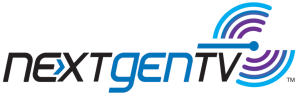Digital Terrestrial Television (DTT)
The Telecommunications Authority of Trinidad and Tobago is pleased to inform the public that the implementation of digital terrestrial television (DTT) in Trinidad and Tobago has formally commenced.
Free To Air (FTA) television broadcasting is an important medium for the dissemination of information to the public, as it is freely accessible. The transition of FTA television to digital will bring enhanced quality service to consumers including up to 4K resolution video, access to electronic programming guides and interactive viewing. On 18th January 2023, the Authority published a notice of the adoption of the Advanced Television Systems Committee Standard Version 3.0 (ATSC 3.0) by the FTA broadcast industry as the standard for free-to-air (FTA) DTT in Trinidad and Tobago. ATSC 3.0 allows datacasting, which is a data delivery system for the transmission of data to an infinite number of devices, for use cases such as E-learning. ATSC 3.0 also has an advanced emergency alert feature which allows broadcasters to send information on emergencies to target receivers, including a wake-up signal to power-on receivers in stand-by mode. FTA television coverage will improve with the transition to digital, as broadcasters will have access to the ability to deploy single frequency networks. Broadcasters will also enjoy significant productivity gains due to reduced operational expenditure on a digital television network.
The Authority will implement the transition to DTT collaboratively with the FTA television broadcasting industry. A DTT Steering Committee will have oversight of the implementation and will guide the work of three working groups – Communication, Finance and Technical. The planned timeframe for the DTT switch-on is 2025, followed by a simulcast period of no longer than 18 months, where both analogue and digital signals will be on-air. The analogue switch-off is planned for 2026.
DTT Framework
DTT Industry Presentations
DTT Consumer Devices
Free-to-air television is received via an antenna connected to the radio frequency (RF) input port and a built-in tuner of a receiver. A receiver for analogue free-to-air television is a television set. However, for DTT the receiver can take many forms. Typical DTT receivers are television sets and set-top-boxes (STBs). Other receivers include mobile phones, dongles and streaming gateways. It is important to note that all DTT receivers require an antenna to receive the DTT signal. The antenna is typically external to the receiver and is connected via the RF input port. Receivers such as mobile phones may have an internal antenna.
ATSC 3.0 TV Set
Reception via an ATSC 3.0 capable television set is the simplest of the configuration options. All that is required is an ATSC 3.0 capable television set and an antenna. With the deployment of ATSC 3.0 in South Korea and the US, ATSC 3.0 capable television sets are being manufactured and are now available for purchase in those markets. ATSC 3.0 capable television sets have a built-in tuner capable of demodulating and decoding ATSC 3.0 signals. Once connected to an antenna, these television sets will display ATSC 3.0 content.
ATSC 3.0 television sets that are certified carry the NEXTGEN TV logo, shown in the Figure below. All certified ATSC 3.0 capable television sets can be found on the website https://www.watchnextgentv.com.

ATSC 3.0 Set-Top-Boxes (STB)
STBs are used to view ATSC 3.0 content on television sets that are not ATSC 3.0 capable. These include older television sets with only an analogue tuner or newer television sets with a digital tuner for a DTT standard other than ATSC 3.0. To view ATSC 3.0 content, the consumer will require a television set, an ATSC 3.0 capable STB and an antenna. Certified ATSC 3.0 STBs can also be found on the website https://www.watchnextgentv.com and carry the NEXTGENTV logo.
UHF Band Antenna
As mentioned previously, the reception of ATSC 3.0 signals requires an antenna. From Trinidad and Tobago, the main parameter is the frequency range of the antenna. All DTT channel assignments will be in the UHF TV band 470 – 698 MHz and therefore any indoor or outdoor UHF TV band antenna will work for the reception of ATSC 3.0 in Trinidad and Tobago. Examples of indoor and outdoor antennas can be found on the following web pages:
Indoor antennas: https://www.thefreetvproject.org/best-indoor-tv-antennas/
Outdoor antennas: https://www.thefreetvproject.org/best-outdoor-tv-antennas/


